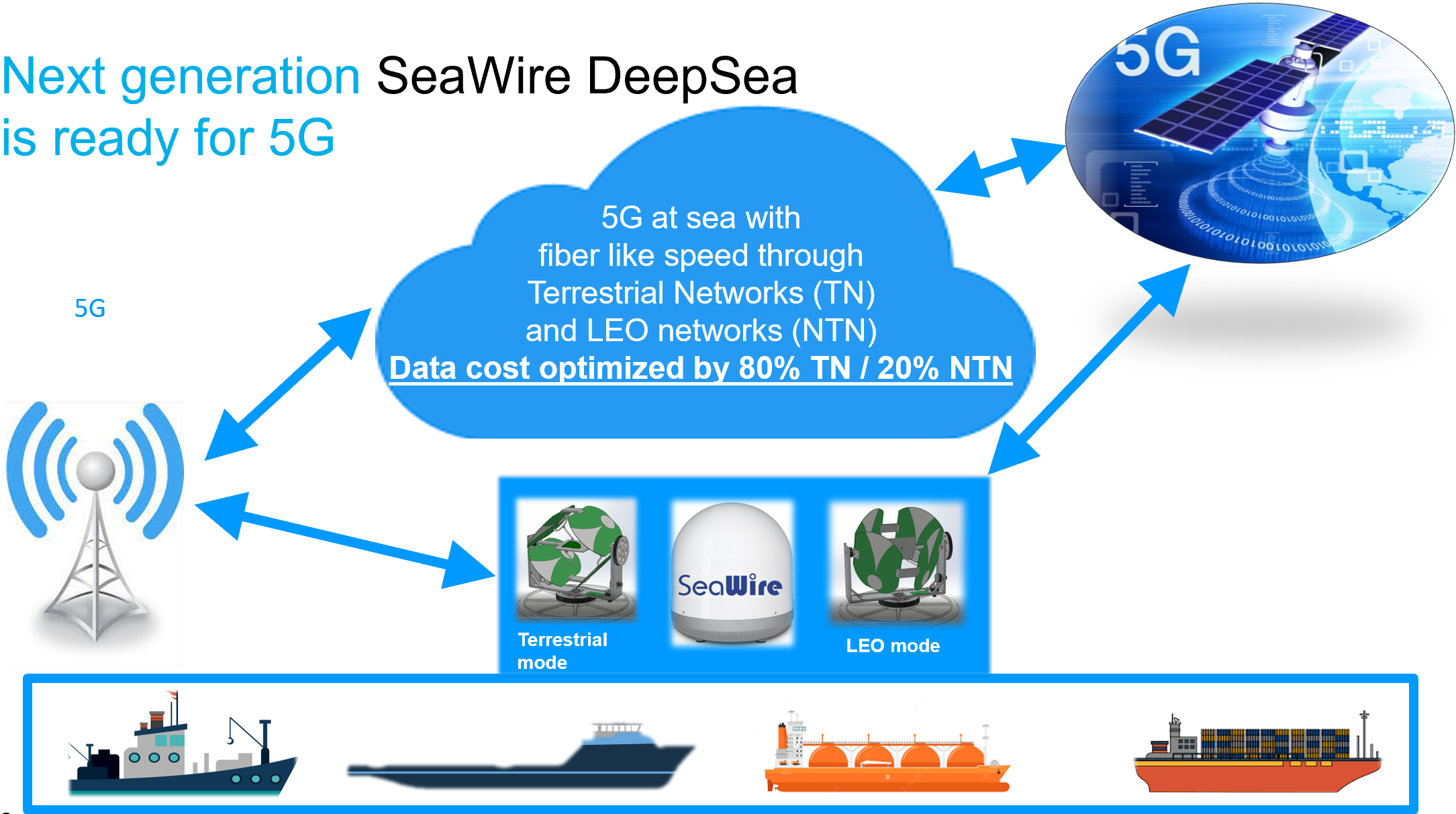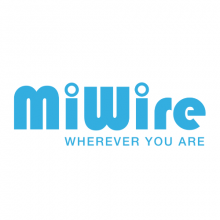
Objectives of the service

The SeaWire DeepSea 5G LEO kickstart activity aims to address key challenges faced by the global maritime sector, including high service costs, inconsistent global coverage, limited bandwidth, latency issues, and difficult service transitions. Our proposed solution is a high-performance, cost-effective global communication system that leverages both 5G Satellite Communications (NTN) and terrestrial network (TN) mobile broadband connectivity.
By improving data throughput and simplifying operation, our service intends to enhance crew quality of life, boost operational efficiency, and enable smart transportation services. Through market and technical feasibility studies, we strive to ensure our solution aligns with user requirements and technological capabilities, thereby filling gaps in the current market.
For the final product, we will develop a non-terrestrial network (NTN) antenna system that ensures stable 5G connectivity, implement seamless network handovers, and ensure operational robustness in diverse maritime environments. This system will be constructed in line with the 3rd Generation Partnership Project (3GPP) release 17, ensuring compatibility with future network upgrades. By addressing these user concerns and technical requirements, we aim to position MiWire as a leader in maritime communication technology.
Users and their needs
The SeaWire DeepSea 5G LEO KS study primarily targets maritime industry users, including vessel operators and crew members, across various sectors globally, with particular emphasis on countries with extensive maritime activities such as the United States, China, Japan, and European nations.
Our users have expressed specific needs and challenges:
-
Global Coverage: Users require consistent global coverage to ensure seamless communication irrespective of their maritime location.
-
High Bandwidth and Low Latency: Increasing reliance on data-driven operations and demand for high-quality entertainment on board necessitates higher bandwidth and lower latency.
-
Seamless Transitions: Users need a seamless transition between terrestrial and non-terrestrial networks to avoid disruption in service.
-
User-friendly Interfaces: The maritime sector is diverse, requiring an interface that's accessible and easy-to-use for users with varying technological skills.
-
Affordable Pricing: Many users desire high-quality connectivity but at a more competitive price than currently available.
To meet these needs, we aim to integrate 5G and LEO satellite technologies into a reliable and efficient maritime communication system, while ensuring affordability and ease-of-use. The main challenge lies in striking a balance between providing high-quality services and maintaining competitive pricing, given the complexities of integrating advanced 5G and LEO technologies.
Service/ system concept
The SeaWire DeepSea 5G LEO solution provides users with unparalleled connectivity at sea by integrating advanced 5G and Low Earth Orbit (LEO) satellite technologies. The service delivers high-speed internet with global coverage, reduced latency, and seamless transitions between terrestrial and non-terrestrial networks, offering a substantial improvement to current maritime communication systems.
In simpler terms, think of it as having a high-quality internet connection like you would in your home or office, but now available even in the middle of the ocean. Whether for operational needs like navigation and communication or for personal use like streaming videos or connecting with family, our solution will ensure reliable, high-speed connectivity.
The system architecture consists of two key components. The first is a specially designed antenna terminal installed on the vessel, which connects to both traditional mobile (terrestrial) networks and new satellite (non-terrestrial) networks. This antenna adjusts its position continuously to maintain the best possible connection. The second component is a control unit inside the ship, which manages the connection, ensuring a seamless switch between networks as needed and delivering a consistent internet service for the users on board.
In essence, the SeaWire DeepSea 5G LEO solution brings the future of maritime communication today, offering a leap in connectivity standards at sea.

Space Added Value
The SeaWire DeepSea 5G LEO solution capitalizes on the convergence of terrestrial and space communication industries, with 5G acting as the linchpin. This global merging effort manifests through an array of satellite operators launching their inaugural 5G satellites, aiming for worldwide coverage. This trend stems from the 3GPP's adaptation of global mobile 5G and prospective 6G standards for specialized deployment.
5G technology is transformative for maritime communications, thanks to its capacity for high data rates and low latency. Paired with LEO satellite networks, which outshine traditional geostationary satellites due to their reduced signal delay and elevated communication speed, it offers faster, more reliable internet access even in the middle of the ocean.
Existing competitors generally depend on geostationary satellites, which suffer from high latency because of their far-off orbital position, or conventional marine communication systems limited in bandwidth and coverage. The integration of 5G and LEO technologies in our solution allows us to surpass these current methods, delivering unmatched coverage, speed, and reliability.
Our ground-breaking application of space assets promises a leap in maritime communication technology, offering a future-proof service that exceeds existing standards and lays the groundwork for the future of sea-based wireless connectivity.
Current Status
The SeaWire DeepSea 5G LEO project has successfully passed its initial system design and conceptual phase as part of the kickstart study, during which we also developed a fundamental design of the mechanics along with some features of the control software.
We've conducted several workshops with our technology partners across Denmark and the Netherlands. We have engaged with potential users to gather their needs and expectations. Based on the gathered feedback, we've initiated our first round of conceptual design and field tests with our high-gain antennas.
We are in ongoing dialogue with various satellite operators in the early stages of launching their satellite constellations, gathering key information to prepare for further development and testing.
Hardware design testing is underway to ensure the robustness of the antenna's mechanical parts. Upcoming activities include intensified field trials and tests for seamless handovers between networks as more LEO satellites are launched and more data becomes available.



